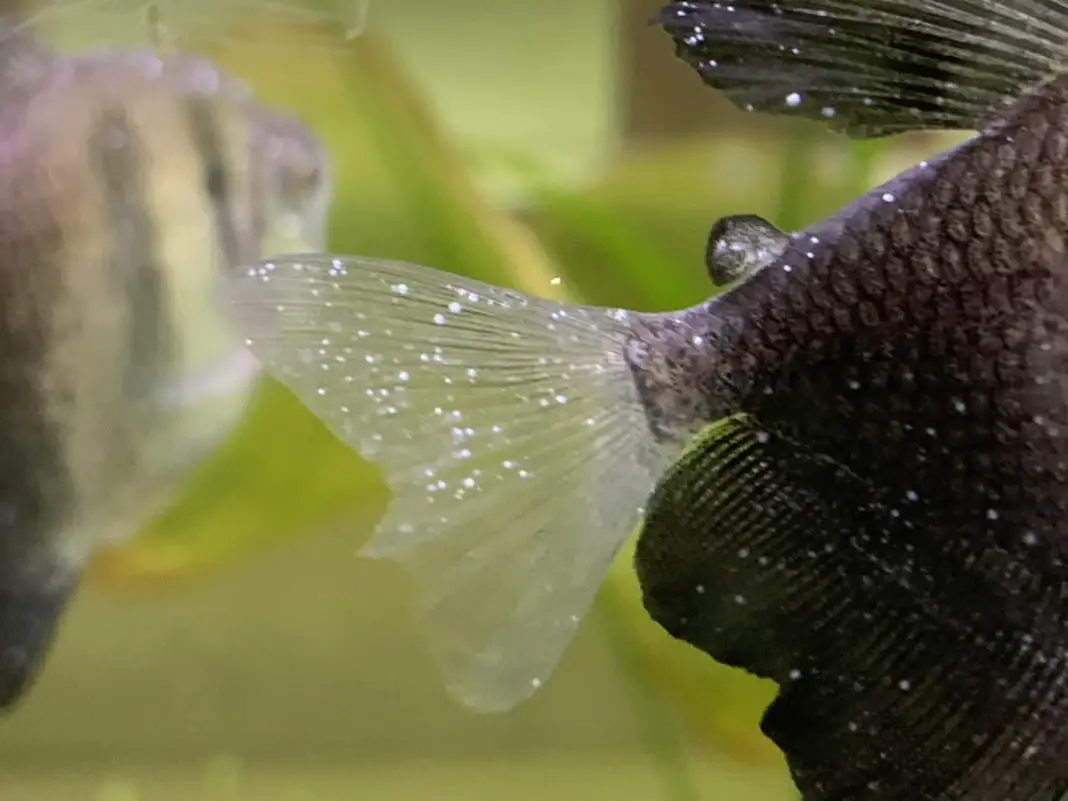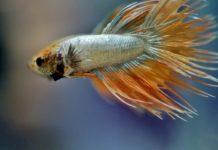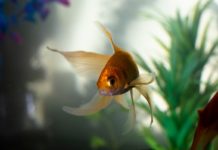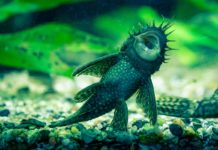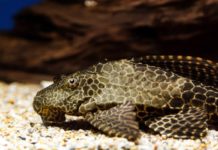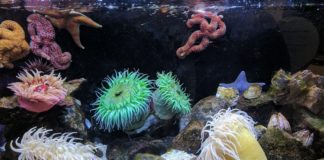Can Ich Go Away On Its Own?
In short, yes, fish that have previously survived an ich infection can develop an immune response and become resistant to re-infection. Serum and mucus from fish that have become immune contain antibodies against the parasite. This results in the infective theronts coming into contact with the anti-ich antibodies, the antibodies cause the theronts to become immobilized. Gradually, the antibodies cause the parasites to leave the fish so the ich cannot become established in the immune fish.
Why Early Detection Is So Important
In order to prevent a tank from getting badly infected with ich, early detection of the parasitic infection is vital. Fish in a home aquarium need a few minutes of attention a day in order to detect any unusual behavior, especially during the first two to three weeks after they have been added to the tank.
It can be initially hard to detect during the earlier stage of infection, as there are no visible spots on the fish. At this stage, it’s also hard to observe the spots if they’re few in number. However, the most notable sign should be the fish’s behavior, as it normally changes to flashing suddenly, scratching against rocks and gravel, gulping air, or even jumping out of the water—all indications that a tank is infected by itch.
The good news is that when fish are treated during an early infection or a light infection, the chance of survival from a parasitic infection is always higher compared to a severely infected tank.
Ich Prevention
The common saying is true “an ounce of prevention is worth a pound of cure”. The best method for controlling an ich outbreak is prevention. Precautions should always be used when establishing an aquarium to prevent ich from being carried by fish, aquatic plants, decorative items, gravel, and water. A tank should be set up with everything for a week before the fish are added. Ich usually loses its infectivity after being separated from fish for two to three days.
Treatment And Prevention Of Ich
Once any white spots are seen on the skin and fins, then it’s almost certain that the fish are infected by ich. It’s at this stage that immediate treatment is required in order to save the infected fish. Ich reproduces rapidly, and one mature ich trophont can produce hundreds to thousands of infective theronts within 24 hours.
Chemical Treatment
Treating Ich with chemicals is always tricky because the parasite penetrates into the fish’s skin and gills and diseased fish usually cannot tolerate a chemical concentration that is high enough to get rid of the parasite within the tissue of the fish. Therefore, the best time to treat infective theronts and reproductive tomonts are when they’re still in the water and before they get on the fish as trophonts.
Many anti-ich chemicals contain formaldehyde, malachite green, and copper sulfate, along with a combination of formaldehyde and malachite green, or a combination of copper sulfate and malachite green. The infected fish should be moved to a quarantine tank in order to avoid treating the healthy fish, and less treatment of chemicals is needed in a smaller tank.
Raising Your Aquarium’s Temperature
Unfortunately, you only have a very narrow window when Ich is vulnerable to medication – which is why treating Ich can be so challenging.
The good news is that you can make this window roll around sooner by increasing the temperature of the aquarium, 86˚F (30˚C) being the sweet spot.
At this stage, you can increase the temperature very slowly.
It’s important to remember that fish are sensitive to rapid changes in temperature. So, if you raise it too quickly, you risk harming the fish.
Rather than changing the water in your tank straight to 86˚F (30˚C), you should gradually it, increase it 2˚F (1˚C) each hour.
It’s important to check the water temperature using a good aquarium thermometer to ensure that you’re not cooking your fish.
Important note: At this step, it’s less suitable for overstocked tanks, tanks that have poor circulation or heat-sensitive fish. If your tank checks any of these boxes and you don’t feel comfortable increasing the temperature of the aquarium then, skip this step.
The reason is that as the temperature of your tank rises, the water in the tank will start to hold less oxygen. This can become a particular problem if the tank has poor circulation or is overstocked, where oxygen is already low.
In a situation like this, raising the temperature could cause problems like labored breathing and rapid breathing, which isn’t something you want if Ich has infected the gills of your fish.
The good news is that this can be achieved by adding an aquarium air pump and airstone or increasing the overall flow of your filter. Doing this will agitate the surface of your aquarium, improving the amount of oxygen available to your fish.
In regards to heat-sensitive fish like goldfish, the temperature should only be adjusted to as high as they will tolerate. Any increase in the tank’s temperature helps to shorten the lifecycle of Ich – allowing for a better opportunity to get rid of it for good.
Don’t worry if this is something you don’t feel comfortable doing as you can still beat Ich without raising the temperature, but it will take a little longer.
Choosing The Right Treatment
When you’ve fed your fish, and the temperature has been raised, it’s now time to get rid of your Ich problem once and for all.
To do that, all that is left to do is add Ich treatment to your tank.
Important note: Before adding any Ich treatment to your tank, make sure to remove any chemical filter media such as activated carbon or Purigen, as these chemical filter media can soak up certain types of medication, and may prevent it from treating your fish.
As always, before adding the treatment, follow the directions closely. Only then should you go ahead and treat the tank. It’s also important to watch your fish like a hawk for the first few hours after adding any treatment. If you start to notice any adverse reactions, you can do an immediate water change and discontinue use.
Conclusion
While those white spots covering your fish from mouth to tail can look intimidating. You shouldn’t worry too much if you think that you’ve caught it early, as Ich doesn’t have to have a fatal end.
If you’ve caught it early and with proper treatment, your tank will be on the road to recovery in no time.

